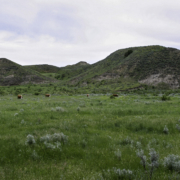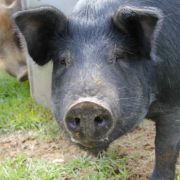Cover Crops, Green Manures, Pre- and Probiotics: Soil Amendments, Fertilizers, or Both?
 Print This Post
Print This Post
By Andrew Coggins, NCAT Agriculture Specialist
The last 12 months have seen an almost unprecedented increase in synthetic fertilizer prices, due in part to war and problems with global supply chains. This has led to increased interest in more sustainable cropping and ranching systems that reduce input costs, decrease reliance on supply chains, and produce food in an environmentally friendly way, and, in turn, increased interest in soil health practices, synthetic fertilizer alternatives, cover crops, green manures, and soil amendments, and more.
The Definition of a Soil Amendment
First, let’s define soil amendment. It is important to differentiate between something added to the soil as a fertilizer with a recognized nutrient analysis within it, and a genuine soil amendment whose main function is to improve the physical characteristics of that soil. I think the following definition is appropriate:
“A soil amendment is any material added to a soil to improve its physical properties, such as water retention, permeability, water infiltration, drainage, aeration and structure. The goal is to provide a better environment for roots.” (Davis and Whiting, 2012)
Why Is This Important?
A soil amendment is not technically a fertilizer, but many of these products and materials will also contain nutrients and therefore act as a fertilizer to a degree, but not always with sufficient amounts to support a following cash crop. Their primary function is to physically improve the properties of the soil.
So, at what point does a soil amendment become a fertilizer, or a fertilizer become a soil amendment, and are some materials in equal measure? The simplest answer must be that the primary use of the product or material in question defines what it is. The use is clear with certain products, such as synthetic fertilizers, but with other materials (and terminology), such as animal manure, pre- and probiotics, compost, biosolids, biochar, legumes, and seed inoculants, the use is not always so clear.
Synthetic fertilizers come in many different formulations and blends adjusted for different crop needs, but they usually start as one of three main classes (Green, 2021):
- Nitrogen fertilizers, such as ammonium nitrate (AN), urea, urea ammonium nitrate (UAN), and ammonium sulphate (AS)
- Phosphorus fertilizers, such as mono ammonium phosphate (MAP), diammonium phosphate (DAP), and triple super phosphate (TSP)
- Potassium fertilizers, such as muriate of potash, potassium nitrate (KN), and sulfate of potash (SOP)
Designed to supply all the plants nutrient needs in a readily available form, the natural nutrient transfer through soil microbial life is not needed anymore. Therefore, soil structure and function start to degrade and become dysfunctional as soil microbial life disappears. Over-fertilization of crops with synthetic fertilizers, especially in drier climates, is also one of the principle causes of saline seep. Unused fertilizer being washed off the soil surface by a sudden heavy rainfall event into gullies, gulches and low areas, turning the area white as the fertilizer salt accumulates there. Therefore, by definition, synthetics are fertilizers only and not soil amendments.
By contrast, cover crops are primarily grown to keep surface cover on the soil and protect it from wind and rain erosion. They will also help to retain soil moisture, keep a living root in the ground, suppress weed growth, and promote soil microbiology.
So, cover crops themselves are primarily improving the physical properties of the soil, though deep-rooted cover crops, such as radish, will also pull mineral nutrients into the plant that would not be accessible to shallow rooted cash crops. When these cover crops die or are terminated, these nutrients then remain available in the top few inches of the soil profile. Therefore, by definition, cover crops are soil amendments in the first instance, but they can also increase nutrient availability.
That said, even with cover crops, this is not a definitive statement, as certain cover crop mixes sown in the fall after a cash crop (such as wheat) can survive the winter and then grow on in the spring (annual or perennial covers such as cereal rye and clover) and continue to build up nutrients within their stems and leaves. Once sufficient nutrients have been built up (which can be determined by tissue analysis), a crop of soybeans or corn for example can be sown into the standing cover, which is then terminated by roller-crimper or some other method, a method called planting green. This cover crop is now technically a green manure with the ability to supply the newly sown cash crops with all its nutrient needs for the rest of the season, while the mass of crop residue continues to provide soil cover, weed suppression, and additional organic matter as it breaks down. Therefore, a multispecies cover crop sown in late summer/early fall is largely classified as a soil amendment, but elements within it, like winter annuals and/or perennials that will continue growing in the spring, become primarily fertilizers when they are terminated as green manures.
We enter a similar confusing world with pre-biotics and pro-biotics, which are hard to define as primarily soil amendments or fertilizers? A prebiotic, by definition, is any material that serves as a food source for microbial populations in humans and soils for example. Prebiotics are applied to improve the balance of these microorganisms too. Plants themselves can therefore be considered as prebiotics as they are feeding soil microbial life, which in turn produces the plant-available nutrients. These include materials such as biochar, compost, compost tea, and animal manure.
Probiotics, by definition, are essentially live bacteria and fungi that are designed to increase the existing microbial population, and therefore increase the soil health by increasing the microbial populations.
“Soil-based probiotics are bacteria naturally found in the earth. One of the most common types of soil-based probiotics (bacillus) has been used to ferment foods for hundreds of years.” (Falconer, 2023)
For the purpose of this blog, we are primarily discussing “off the shelf” manufactured prebiotic and probiotic products with a defined cost, set application rates, and a set N:P:K analysis. As with fertilizers, where there are synthetic fertilizers and natural fertilizers, now there is an ever-increasing number of manufactured soil amendments coming onto the market to compete with the natural prebiotics and probiotics. In other words, there are natural soil amendments and natural fertilizers to help build soil health and produce good healthy crops, and there are manufactured fertilizers and soil amendments to supposedly the do the same. By general consensus, it is widely acknowledged that synthetic fertilizers promote yield but are actually detrimental to soil health. Do manufactured pre- and probiotics do the same (whether they contain natural ingredients or not), and can they speed up the process of improving soil health, or can they be as detrimental to soil health as synthetic fertilizers are? One question often asked with manufactured probiotics is whether they increase the existing soil microbiology or replace it?
An example is Earthfort’s Soil ReVive® (pre-biotic), which is a water-soluble powder composed of humic acid, kelp, complex carbohydrates, and amino acids. It provides a natural way of feeding the microorganisms in the soil and is a perfect complement to Soil ProVide®. Soil ProVide (pro-biotic) is a liquid that contains soil microorganisms such as bacteria and fungi. These organisms support plant health as they decompose organic matter, cycle nutrients, and enhance soil structure.
We have worked with a rancher in the recent past who has used these products for a number of years, most recently through his irrigation pivots. Both Soil ReVive and Soil ProVide are listed on Earthfort’s website as soil amendments, and this was the reason he started using them. However, since 2019, he has managed to stop using fertilizer (and pesticides) completely on his hay production areas and now sees these products as organic fertilizers as much as soil amendments. So, back to the original question – are these products and others like them, soil amendments, fertilizers, or both?
Related ATTRA Resources:
Biochar and Sustainable Agriculture
Soil Health Indicators and Tests
The Journey to a More Holistic System of Ranching
Managing Soils for Water: How Five Principles of Soil Health Support Water Infiltration and Storage
Building Healthy Pasture Soils
Agriculture, Climate Disruption, and Carbon Sequestration
Other Resources:
The Main Fertilizer Types and an Overview of Their Chemical Processes
Colorado State University – Choosing a soil amendment – 7.235
The Facts On Soil Based Probiotics Uses, Benefits and Side Effects
This blog is produced by the National Center for Appropriate Technology through the ATTRA Sustainable Agriculture program, under a cooperative agreement with USDA Rural Development. ATTRA.NCAT.ORG.
Mention of specific products, manufacturers, or brand names is for educational purposes only and does not constitute endorsement by NCAT, ATTRA, or USDA.

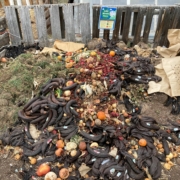
 USDA NRCS
USDA NRCS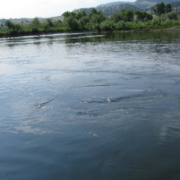 NCAT
NCAT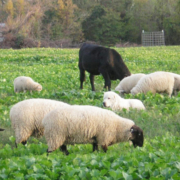 NCAT
NCAT